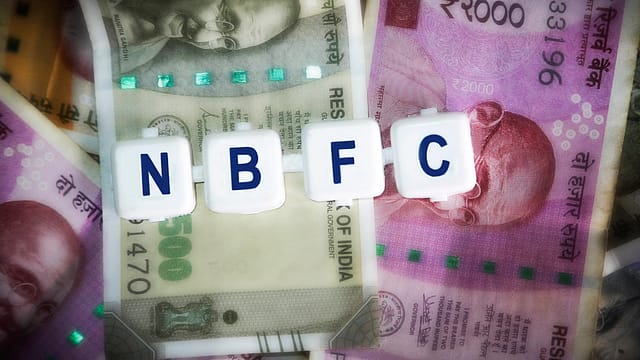Small NBFCs could witness sharp increase in funding costs: Ind-Ra
ADVERTISEMENT

Small non-bank finance companies (NBFCs) could witness a sharp increase in their funding costs as the sector moves towards banks for meeting its funding requirements, according to India Ratings and Research.
A large quantum of borrowings to be raised by large NBFCs would lead to a further increase in the banks' exposure to the sector, and small NBFCs thus could face crowding out, the rating agency says.
Borrowings of NBFCs could get skewed to banks in the financial year 2022-23, given the hardening of rates in the capital markets, Ind-Ra adds.
"With the rise in interest rates, NBFCs would see a faster increase in the incremental funding cost than that for banks on account of their institutional funding. Around one-third of the NBFCs' borrowings would come up for refinancing in FY23," the report says, adding bank funding on the NBFC balance sheet is mostly floating in nature and would also witness upward repricing.
Ind-Ra, however, believes MCLR-linked funding would see a lagged increase in cost compared to the borrowings linked to market benchmarks such as repo and T-Bill.
The rating agency expects a shift in the NBFCs' funding mix in FY23, driven by a rise in the proportion of short-term funding by way of commercial papers and debenture funding getting replaced by bank funding to a certain extent.
December 2025
The annual Fortune 500 India list, the definitive compendium of corporate performance, is out. This year, the cumulative revenue of the Fortune 500 India companies has breached $2 trillion for the first time. Plus, find out which are the Best B-schools in India.
External commercial borrowings have also become costlier due to the rise in the benchmark rate and increase in hedging cost, and so some portion of this would also get refinanced by bank funding, Ind-Ra says.
Securitisation volumes are expected to pick up as the banks' appetite to buy a pool of assets and invest in pass-through certificates is recovering with the improvement in collection efficiencies.
"The prevailing uncertain operating environment has led NBFCs to maintain excess liquidity on the balance sheet in the range of 5%-10% of assets. This impacted the profitability due to the negative carry of excess liquidity. However, Ind-Ra opines NBFCs would dilute the liquidity buffers to a certain extent to reduce the impact of negative carry with the improvement in the operating environment and increase in the funding cost," the rating agency adds.
As per Ind-Ra's analysis, the increase in rates could lead to a 90-100 basis points y-o-y rise in funding cost by FY23.
Although Ind-Ra opines a margin compression of 35-40 bps in FY23, saving on credit cost due to a better operating environment could mitigate the impact on return ratios, provided there is no event that has a disproportionate impact on the markets.
